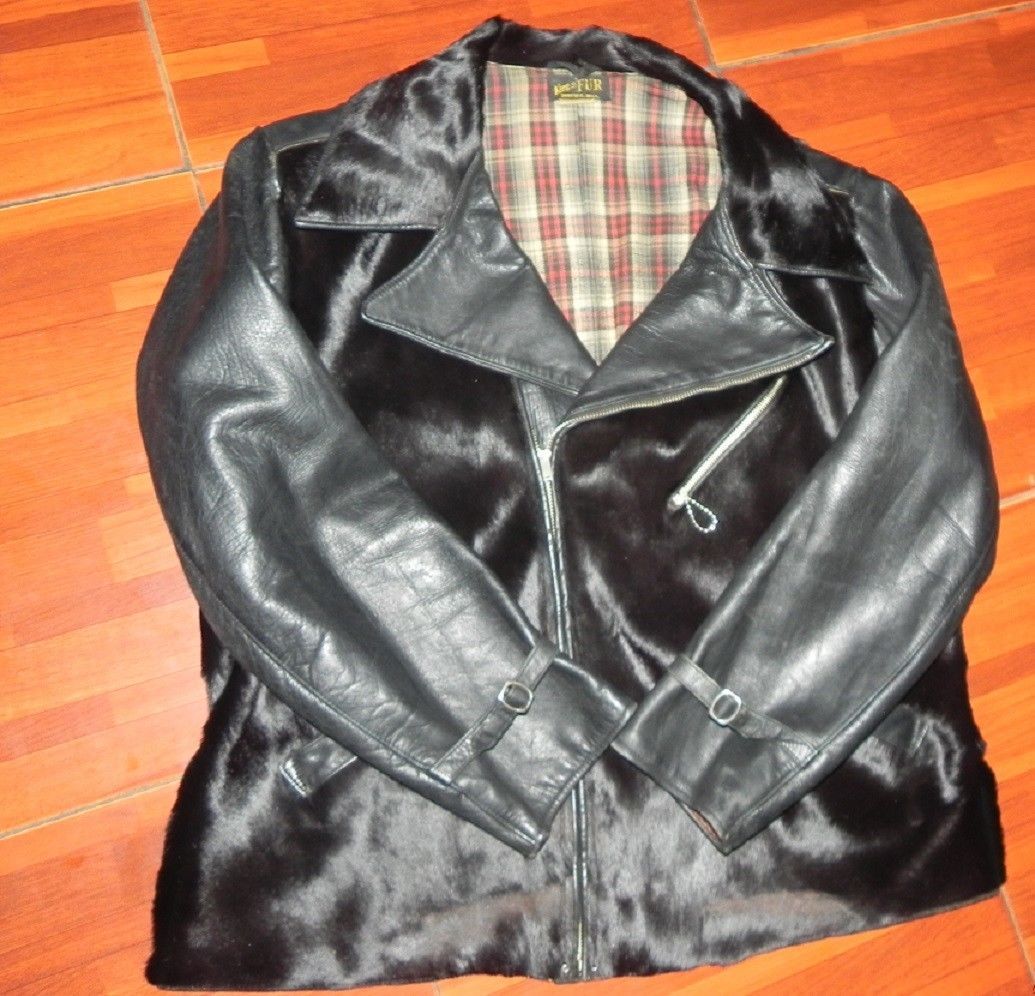- Messages
- 10,562
- Location
- Bozeman, MT
I recently bought an original 1929 advertising pamphlet advertising King-o-FUR jackets. I've scanned it in for you all to enjoy, and have transcribed the more interesting bits.
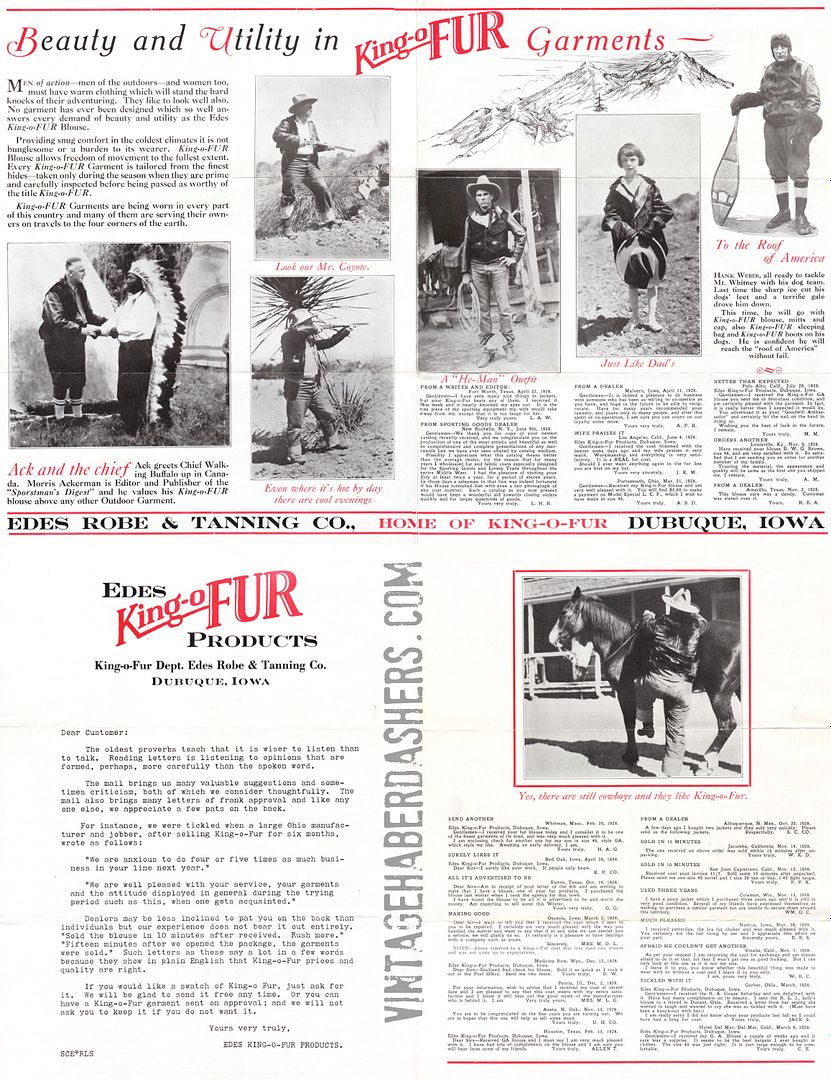
The fur blouse gave rise to the laskinlamb jacket. The style was pioneered by the Edes Robe Tanning Co.
The Edes Robe Tanning Company was founded c.1905 by Canadian-born St. Clair Ede. The company once had locations in Dubuque, Iowa, Saint Paul, Minnesota, Omaha, Nebraska and Souix Falls, South Dakota. Their primary business was ponyskin lap robes for carriages and early open automobiles. As carriages were replaced by automobiles, and as car design became enclosed, the need for fur robes mostly evaporated. Faced with a changing market, Edes focused their attention on their fur coat business, producing fur coats for men and women under the King-O-FUR label. Unlike many furriers, Edes took styling cues from the new waist-length outdoorsman's leather jacket styles, but made them in the material they knew best- ponyskin.
The jacket, with leather sleeves and trim and a fur body would catch on. Other companies began producing the style, modified with thick mouton panels instead of hair-on ponyskin, in the early 1930s, with the style peaking in popularity in 1937. King-O-Fur would introduce the slogan "Not an Imitation and Not Imitated". St. Claire Ede died in 1938 and the company was taken over by his widow Louise A Ede. The company was dissolved on November 15, 1939.
More on them can be found in a piece I wrote here.
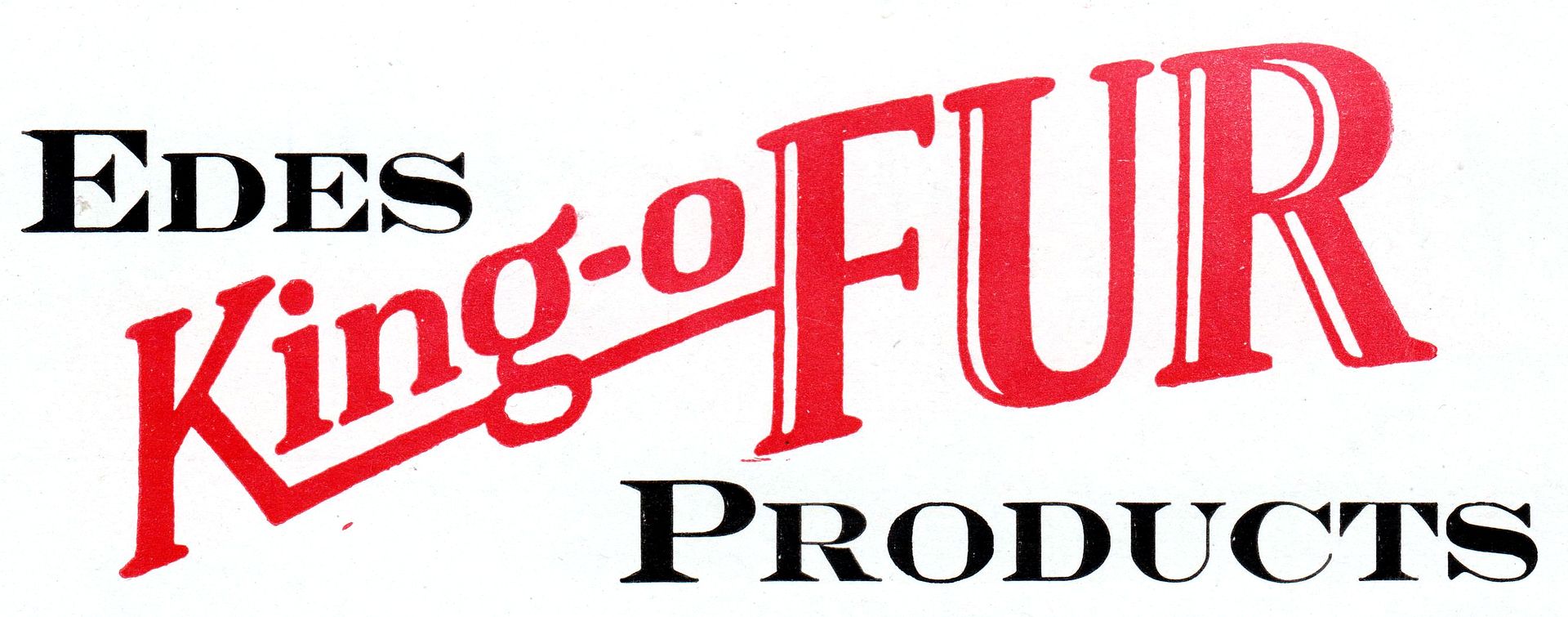
Men of action- men of the outdoors- and women too, must have warm clothing which will stand the hard knocks of their adventuring. They like to look well also. No garment has ever been designed which so well answers every demand of beauty and utility as the Edes King-o-FUR blouse.
Providing snug comfort in the coldest climates it is not bunglesome or a burden to its wearer. King-o-FUR Blouse allows freedom of movement to the fullest extent. Every King-o-FUR garment is tailored from the finest hides - taken only during the season when they are prime and carefully inspected before being passed as worthy of the title King-o-FUR.
King-o-FUR Garments are being worn in every part of this country and many of them are serving their owners on travels to the four corners of the earth.
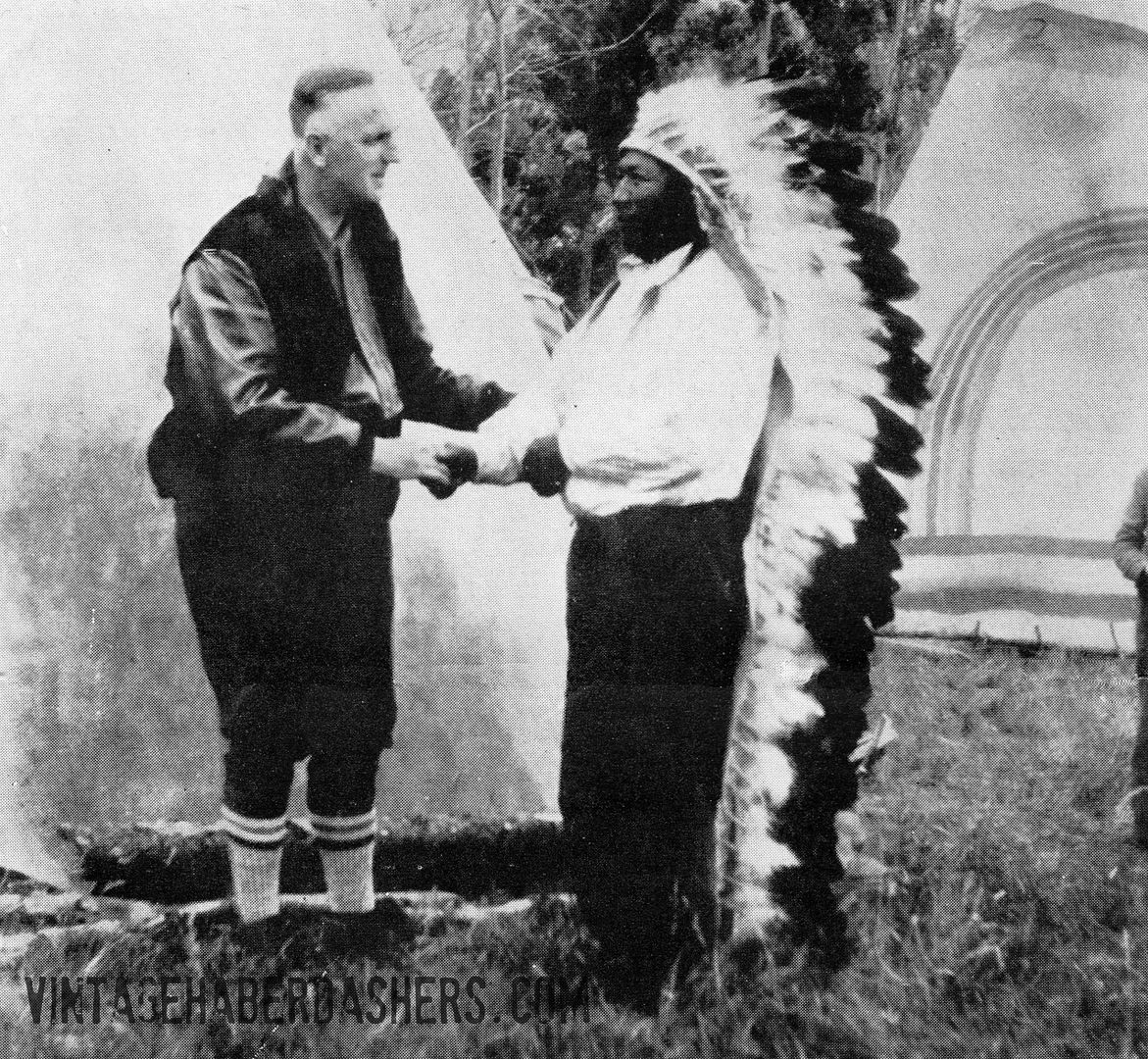
Ack and the Chief
Ack greets Chief Walking Buffalo up in Canada. Morris Ackerman is Editor and Publisher of the "Sportsman's Digest" and he values his King-o-FUR blouse above any other outdoor garment
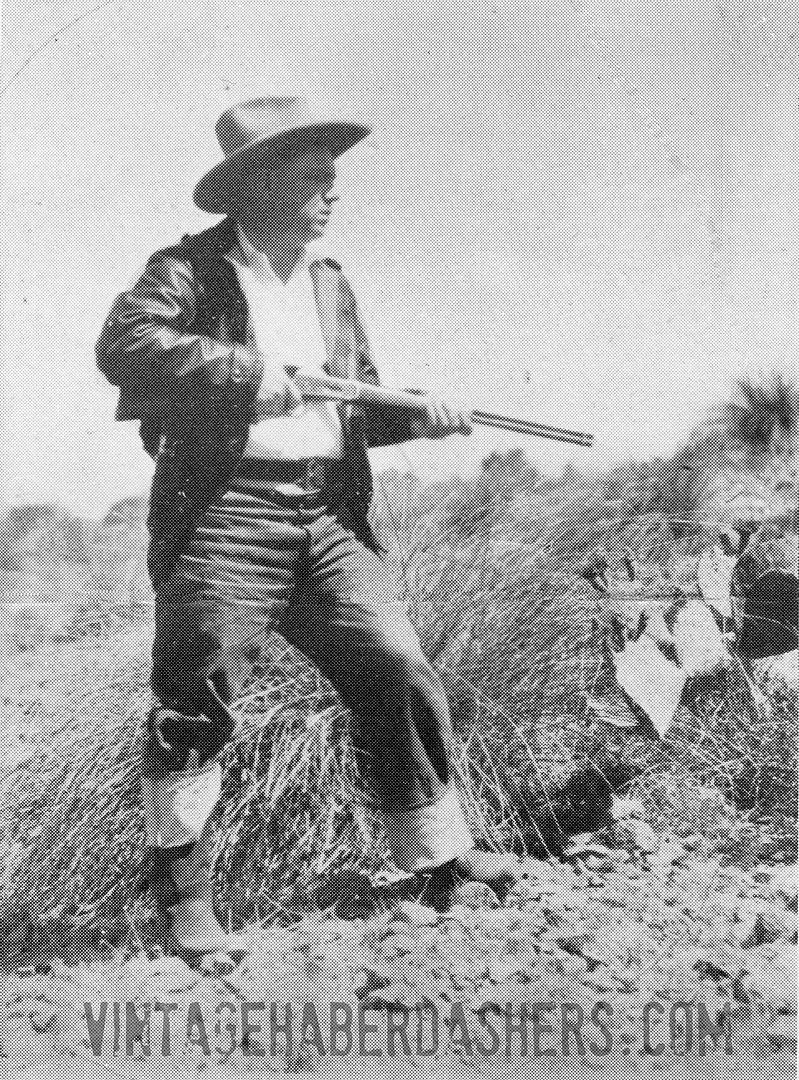
Look out Mr. Coyote
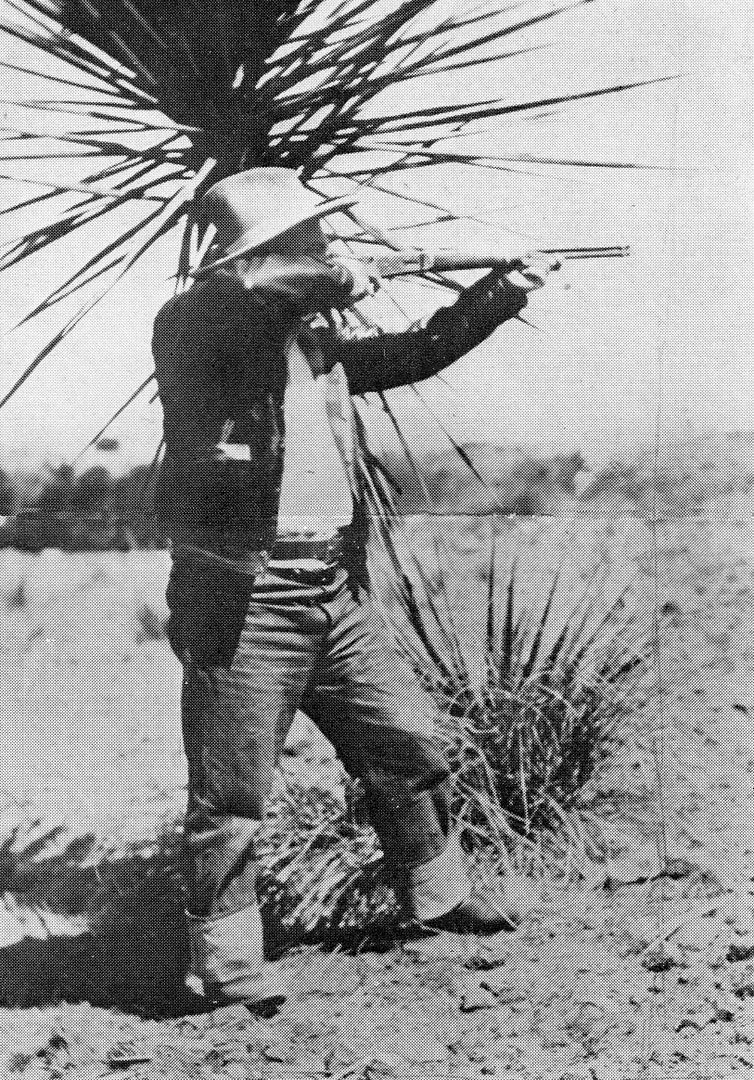
Even where it's hot by day there are cool evenings
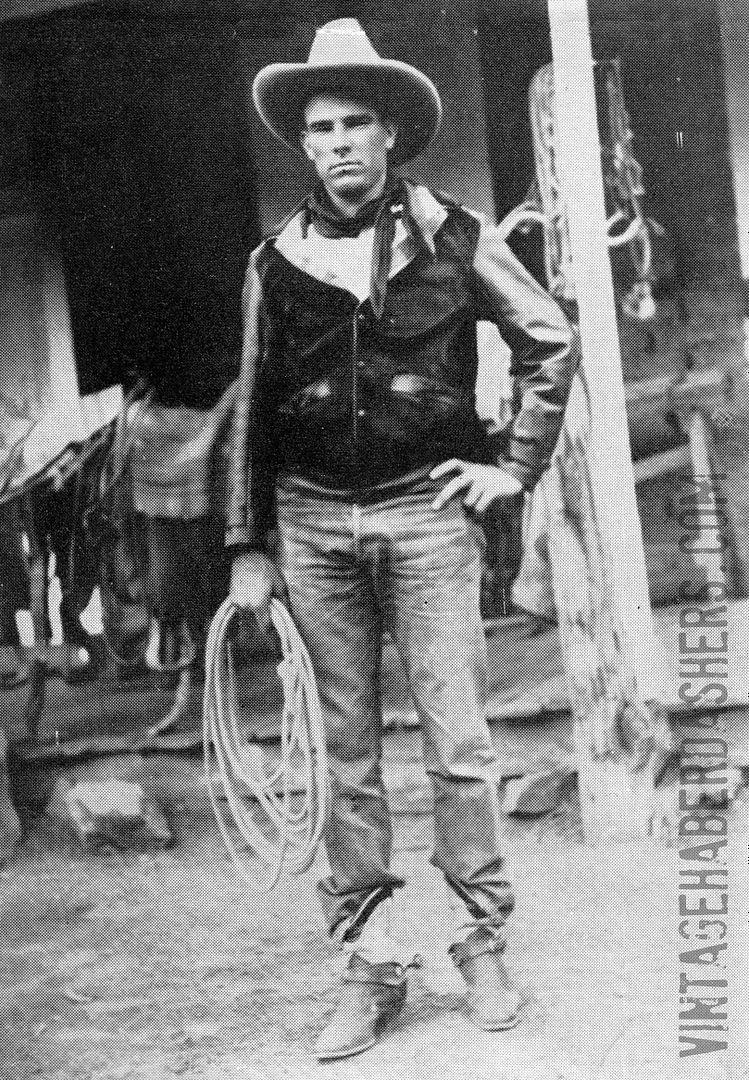
A "He-Man" Outfit
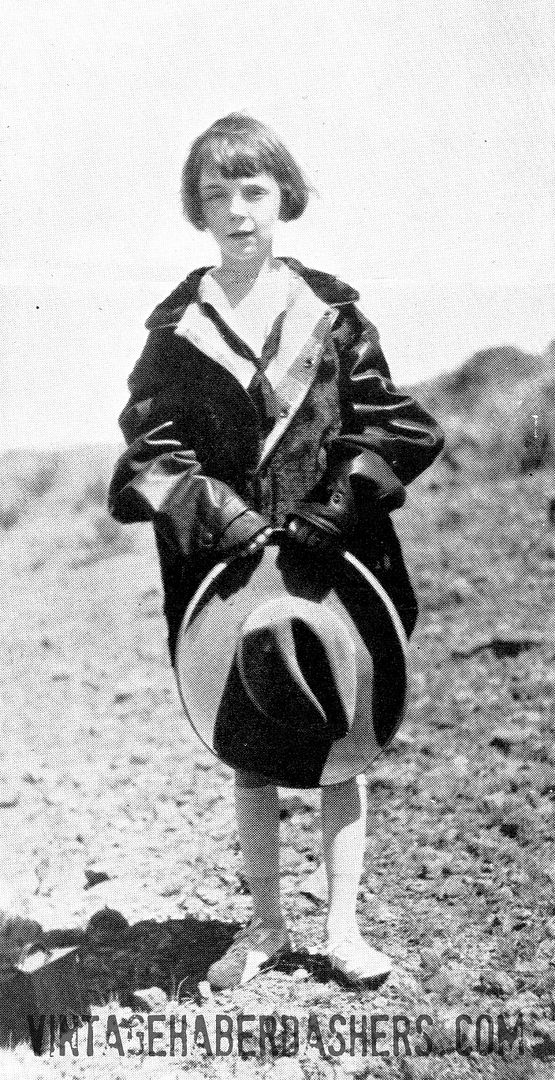
Just Like Dad's

To the Roof of America
Hank Weber, all ready to tackle Mt. Whitney with his dog team. Last time the sharp ice cut his dogs feet and a terrific gale drove him down. This time, he will go with Kin-o-FUR blouse, mitts, and cap, also King-o-FUR sleeping bag and King-o-FUR boots on his dogs. He is confident he will reach the "roof of America" without fail.
A bit more research reveals that in 1927, Weber, "and his dog team of Irish Airedales are reported to have scaled Mt. Whitney and planted the American flag on top of the buried Smithsonian hut at the summit. This is the first time Mt. Whitney has ever been climbed with the aid of a dog team. Weber made several attempts, being driven back by intense cold and blizzards. He was lost once and found in a dazed condition by a rescue party" - Santa Cruz Evening News, May 16, 1927.
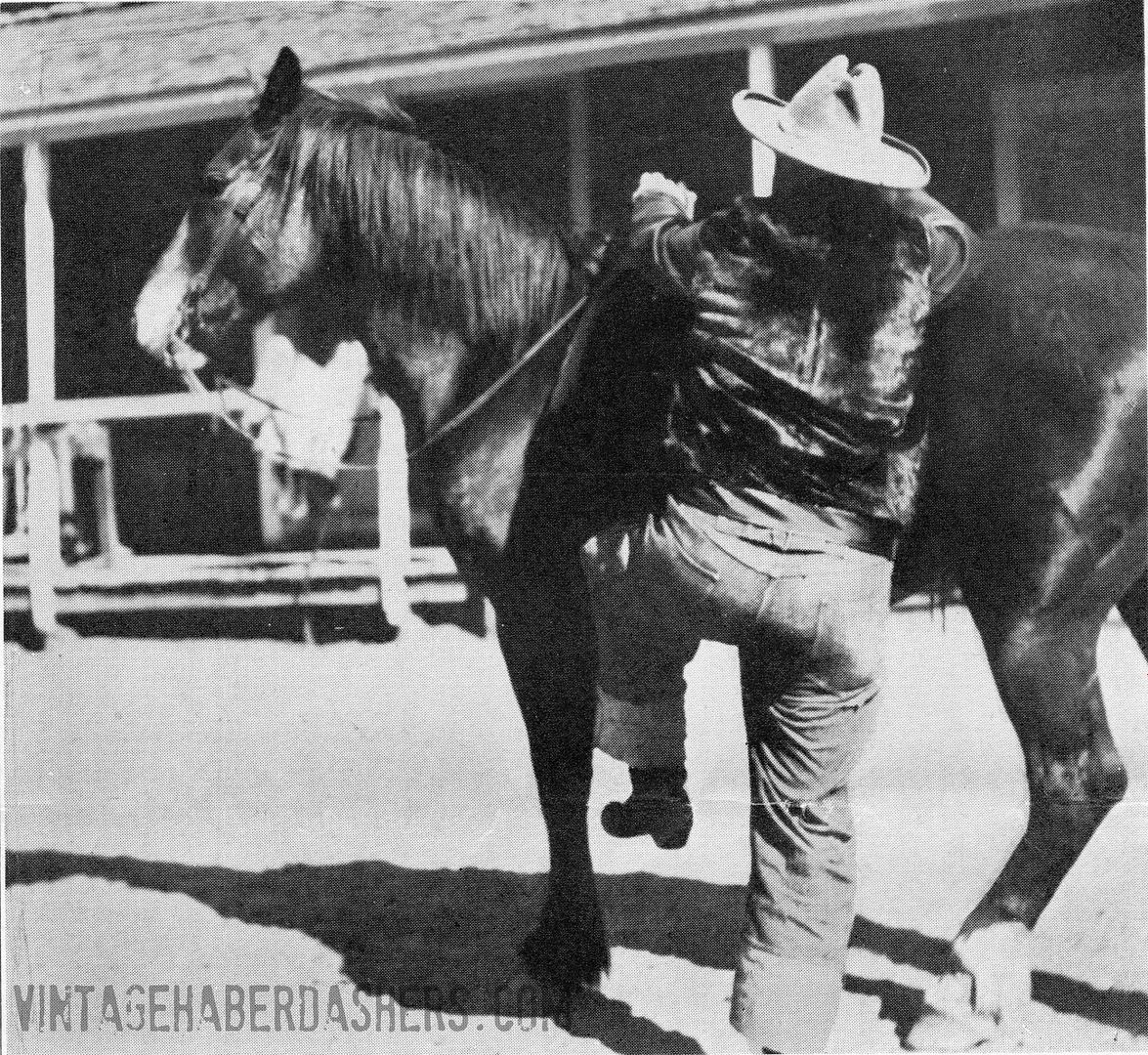
Yes, there are still cowboys and they like King-o-FUR
More endorsers in a piece I wrote here.

The fur blouse gave rise to the laskinlamb jacket. The style was pioneered by the Edes Robe Tanning Co.
The Edes Robe Tanning Company was founded c.1905 by Canadian-born St. Clair Ede. The company once had locations in Dubuque, Iowa, Saint Paul, Minnesota, Omaha, Nebraska and Souix Falls, South Dakota. Their primary business was ponyskin lap robes for carriages and early open automobiles. As carriages were replaced by automobiles, and as car design became enclosed, the need for fur robes mostly evaporated. Faced with a changing market, Edes focused their attention on their fur coat business, producing fur coats for men and women under the King-O-FUR label. Unlike many furriers, Edes took styling cues from the new waist-length outdoorsman's leather jacket styles, but made them in the material they knew best- ponyskin.
The jacket, with leather sleeves and trim and a fur body would catch on. Other companies began producing the style, modified with thick mouton panels instead of hair-on ponyskin, in the early 1930s, with the style peaking in popularity in 1937. King-O-Fur would introduce the slogan "Not an Imitation and Not Imitated". St. Claire Ede died in 1938 and the company was taken over by his widow Louise A Ede. The company was dissolved on November 15, 1939.
More on them can be found in a piece I wrote here.

Men of action- men of the outdoors- and women too, must have warm clothing which will stand the hard knocks of their adventuring. They like to look well also. No garment has ever been designed which so well answers every demand of beauty and utility as the Edes King-o-FUR blouse.
Providing snug comfort in the coldest climates it is not bunglesome or a burden to its wearer. King-o-FUR Blouse allows freedom of movement to the fullest extent. Every King-o-FUR garment is tailored from the finest hides - taken only during the season when they are prime and carefully inspected before being passed as worthy of the title King-o-FUR.
King-o-FUR Garments are being worn in every part of this country and many of them are serving their owners on travels to the four corners of the earth.

Ack and the Chief
Ack greets Chief Walking Buffalo up in Canada. Morris Ackerman is Editor and Publisher of the "Sportsman's Digest" and he values his King-o-FUR blouse above any other outdoor garment

Look out Mr. Coyote

Even where it's hot by day there are cool evenings

A "He-Man" Outfit

Just Like Dad's

To the Roof of America
Hank Weber, all ready to tackle Mt. Whitney with his dog team. Last time the sharp ice cut his dogs feet and a terrific gale drove him down. This time, he will go with Kin-o-FUR blouse, mitts, and cap, also King-o-FUR sleeping bag and King-o-FUR boots on his dogs. He is confident he will reach the "roof of America" without fail.
A bit more research reveals that in 1927, Weber, "and his dog team of Irish Airedales are reported to have scaled Mt. Whitney and planted the American flag on top of the buried Smithsonian hut at the summit. This is the first time Mt. Whitney has ever been climbed with the aid of a dog team. Weber made several attempts, being driven back by intense cold and blizzards. He was lost once and found in a dazed condition by a rescue party" - Santa Cruz Evening News, May 16, 1927.

Yes, there are still cowboys and they like King-o-FUR
More endorsers in a piece I wrote here.



